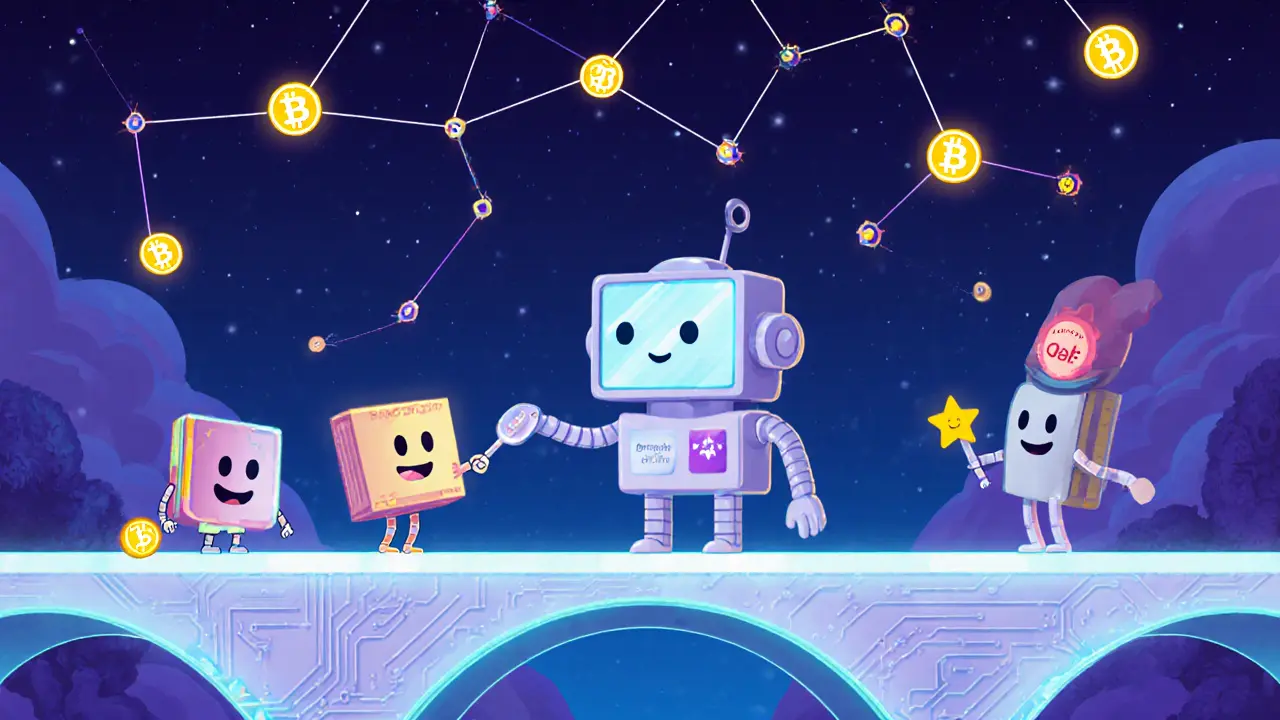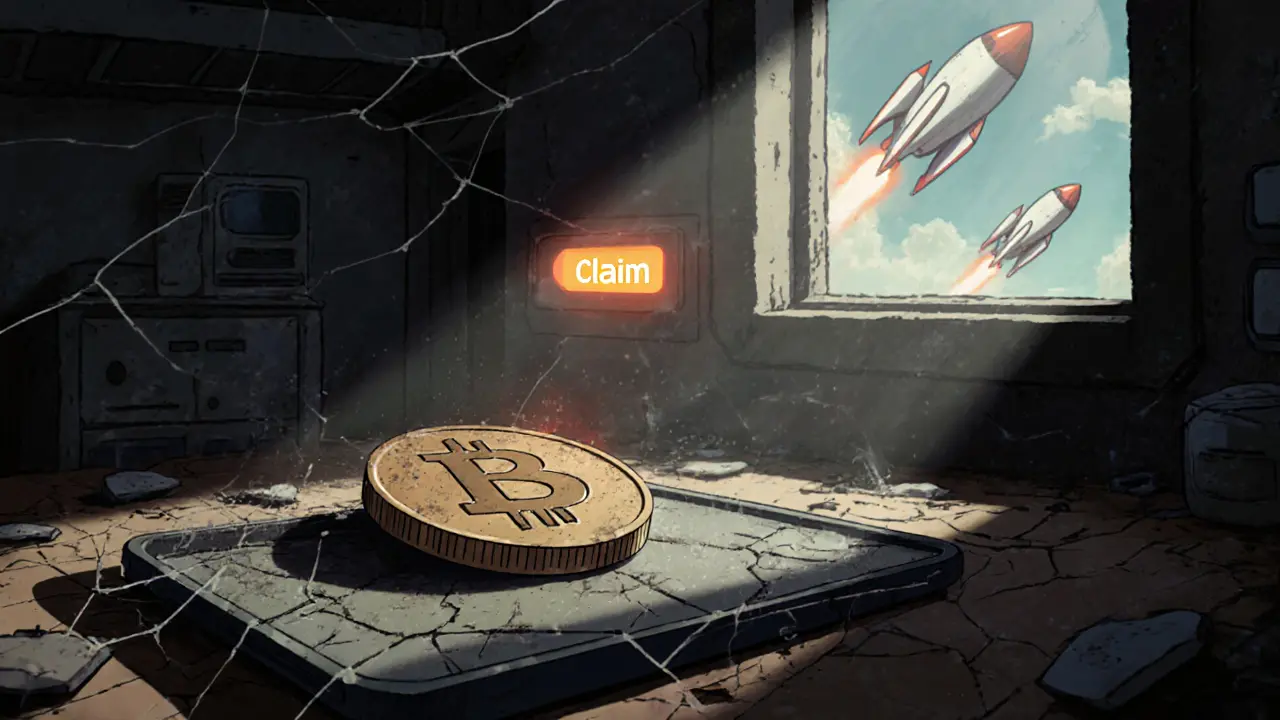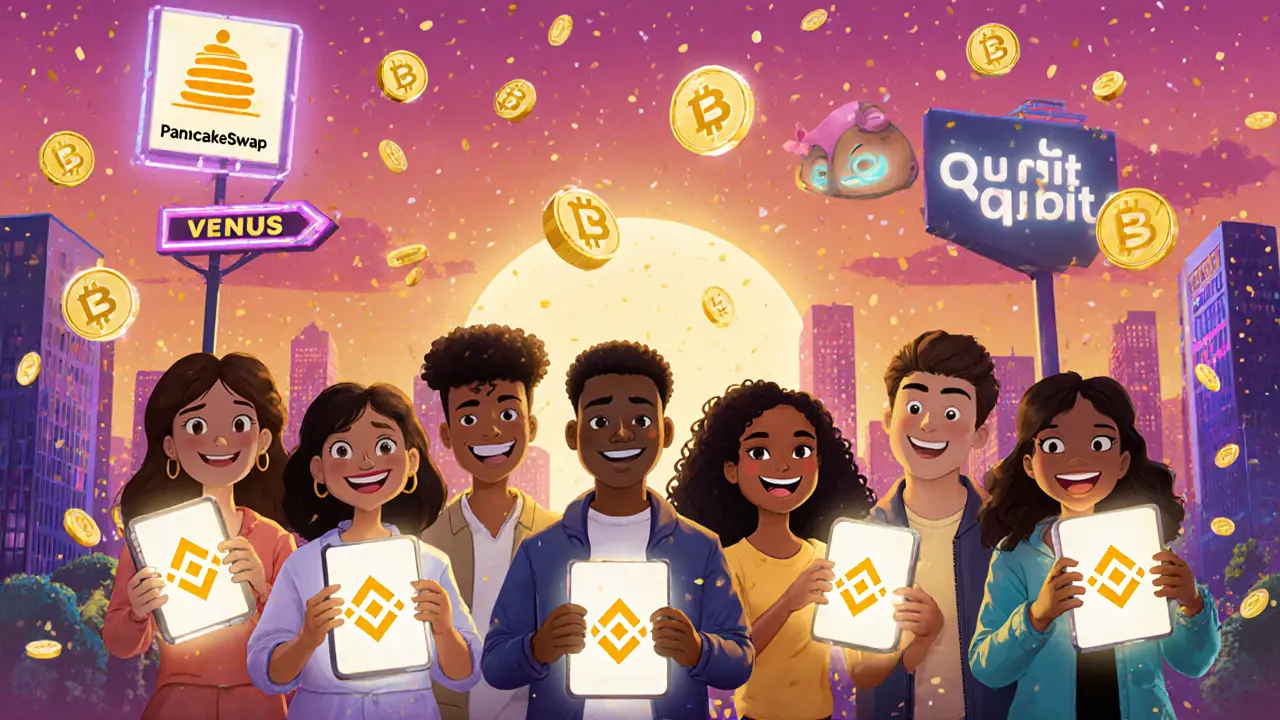QBT Airdrop Eligibility Checker
Check if your Binance Smart Chain wallet was eligible for the QBT airdrop based on activity between July and September 2021. Eligibility was determined by interacting with at least 3 different DeFi protocols on BSC.
Eligibility Status
Eligibility Criteria
Eligibility for the QBT airdrop was based on:
- Interacting with at least 3 different DeFi protocols on Binance Smart Chain
- Activity between July and September 2021
- Common protocols included: PancakeSwap, Venus, Cream Finance, and other MVB III projects
- No KYC required - eligibility was determined automatically by wallet activity
The QBT airdrop from the BSC MVB III x Qubit Event was a small but strategic move in the early days of Binance Smart Chain’s DeFi boom. It happened in late September 2021 - not as a massive token giveaway, but as a targeted effort to reward early supporters of the Qubit protocol during CoinMarketCap’s Most Valuable Builder (MVB) Program. If you were active in the BSC ecosystem back then, this might’ve been your chance to get QBT tokens for free. But if you missed it, you’re not alone - and there’s a good reason why.
What Was the BSC MVB III x Qubit Event?
The BSC MVB III program was part of CoinMarketCap’s accelerator initiative for blockchain projects. Run by YZi Labs and CMC Labs, it wasn’t just a funding round - it was a four-week bootcamp for early-stage DeFi teams building on Binance Smart Chain. The goal? Help founders refine their tech, connect with investors, and grow their user base. Qubit, a cross-chain lending and borrowing protocol, was one of the selected teams in the third cohort. As part of their participation, Qubit ran a $20,000 airdrop to build community trust and encourage early adoption. The event started on September 28, 2021, UTC+0. It wasn’t open to everyone. You had to be actively using BSC-based DeFi apps - like swapping tokens on PancakeSwap, staking in liquidity pools, or interacting with other MVB projects - to qualify.Who Got QBT Tokens?
Eligibility wasn’t based on holding a specific amount of BNB or BUSD. Instead, it was tied to on-chain activity. If you’d interacted with at least three different DeFi protocols on Binance Smart Chain between July and September 2021, you were likely in the running. This included:- Swapping tokens on PancakeSwap
- Lending or borrowing on Venus or Cream Finance
- Providing liquidity to BSC pools
- Participating in other MVB III projects’ events
How Did the Airdrop Work?
The QBT tokens were distributed via a smart contract tied to the MVB III program. Once the event ended, eligible wallets received a notification through the Qubit dashboard (now defunct) and could claim their tokens by connecting their wallet to the Qubit website. The claim window stayed open for 30 days - until October 28, 2021. The smart contract was verified on BSCScan. Each token had a total supply of 100 million QBT, with 5% (5 million tokens) allocated for the airdrop. No more than 1% of the total supply went to any single wallet. The distribution was designed to avoid whale dominance and spread tokens widely across the community.
What Happened After the Airdrop?
After the airdrop, Qubit launched its mainnet lending platform in November 2021. The QBT token was meant to be a governance token - letting holders vote on protocol upgrades, fee structures, and new asset listings. But adoption was slow. By early 2022, trading volume for QBT on decentralized exchanges was under $10,000 per day. Liquidity pools dried up. Many recipients sold their tokens immediately, seeing them as a windfall rather than a long-term stake. Qubit didn’t disappear - it kept building. In 2023, it migrated its core lending engine to Layer 2 solutions to reduce gas costs. But the QBT token never gained traction as a governance tool. Today, it’s listed on only two small DEXs and has no major exchange support. The airdrop remains one of the last public actions tied to the original Qubit team.Why This Airdrop Mattered
This wasn’t a flashy $10 million giveaway like some other DeFi launches. But it was a smart one. In 2021, most protocols were throwing tokens at anyone who showed up. Qubit focused on quality. They didn’t want bots or speculators. They wanted real users - people already comfortable with BSC’s ecosystem. That’s why the eligibility rules were so specific. It also showed how BNB Chain was shifting from just being a cheaper Ethereum alternative to a real hub for innovation. The MVB program gave early teams like Qubit the tools to build, not just launch. For many participants, this was their first real exposure to institutional support in DeFi.
Could Something Like This Happen Again?
Unlikely in the same form. CoinMarketCap shut down the MVB program in 2022. The DeFi space has changed. Airdrops today are either tied to massive protocol launches (like Arbitrum or zkSync) or used as marketing gimmicks by low-quality projects. The days of carefully curated, activity-based airdrops with real utility are fading. If you’re looking for similar opportunities now, watch for:- Programs run by Chainlink, Polygon, or Arbitrum’s own ecosystem funds
- Early access events for Layer 2 rollups
- Community governance programs that reward long-term participation
Is QBT Still Worth Anything?
As of November 2025, QBT trades at around $0.0012 per token on the few remaining DEXs. The total market cap is under $120,000. It’s not dead - but it’s not alive either. There’s no active development team, no roadmap updates, and no exchange listings in progress. If you still hold QBT tokens, you can technically claim them - but there’s no real benefit. No staking, no voting, no liquidity mining. The smart contract still works, but the protocol behind it has gone quiet.Lessons from the QBT Airdrop
This event teaches a few hard truths:- Not all airdrops are created equal - some are rewards, others are noise.
- Activity-based eligibility beats random giveaways. It builds real users, not speculators.
- Token value doesn’t come from distribution - it comes from utility and adoption.
- Even well-backed projects can fade if they don’t keep building after launch.
Was the QBT airdrop real or a scam?
The QBT airdrop was real. It was part of CoinMarketCap’s official MVB III program and tied to the Qubit protocol’s launch on Binance Smart Chain. Eligible wallets received tokens via a verified smart contract. However, the project failed to maintain momentum after launch, which is why QBT has little value today. It wasn’t a scam - it was an underdeveloped project.
How do I check if I was eligible for the QBT airdrop?
The official claim portal shut down in October 2021. There’s no public list of eligible wallets. If you were active on BSC between July and September 2021 - using PancakeSwap, Venus, or other DeFi apps - you may have qualified. You can check your wallet history on BSCScan for interactions with Qubit’s contract address, but there’s no way to confirm eligibility now.
Can I still claim QBT tokens today?
Technically, yes - the smart contract is still live. But the claim interface is gone. You’d need to manually interact with the contract using a tool like Etherscan or BSCScan, which requires advanced knowledge. Even if you claim tokens, they have no use. No staking, no governance, no exchange support. It’s not worth the gas cost or risk.
What was the total supply of QBT tokens?
The total supply of QBT was 100 million tokens. Five million (5%) were allocated for the MVB III airdrop. Another 20% went to the team and advisors with a four-year vesting schedule. The rest was reserved for ecosystem growth, liquidity mining, and future incentives - most of which never materialized.
Why did the Qubit protocol fade after the airdrop?
Qubit launched its lending platform after the airdrop but struggled to attract users. Competitors like Aave and Compound had stronger brand recognition and deeper liquidity. Qubit’s team lacked marketing resources, and the QBT token never gained governance adoption. By 2023, the team shifted focus to Layer 2 upgrades but stopped public updates. Without community trust or active development, the project stalled.

garrett goggin
November 17, 2025 AT 01:04Bill Henry
November 17, 2025 AT 10:15Jess Zafarris
November 18, 2025 AT 21:20jesani amit
November 19, 2025 AT 18:14Peter Rossiter
November 19, 2025 AT 18:19Mike Gransky
November 20, 2025 AT 07:07Ella Davies
November 22, 2025 AT 03:57Ryan Hansen
November 24, 2025 AT 01:17Derayne Stegall
November 25, 2025 AT 00:44Astor Digital
November 26, 2025 AT 15:11Shanell Nelly
November 28, 2025 AT 03:13Aayansh Singh
November 28, 2025 AT 10:42Rebecca Amy
November 28, 2025 AT 11:15Darren Jones
November 28, 2025 AT 20:52